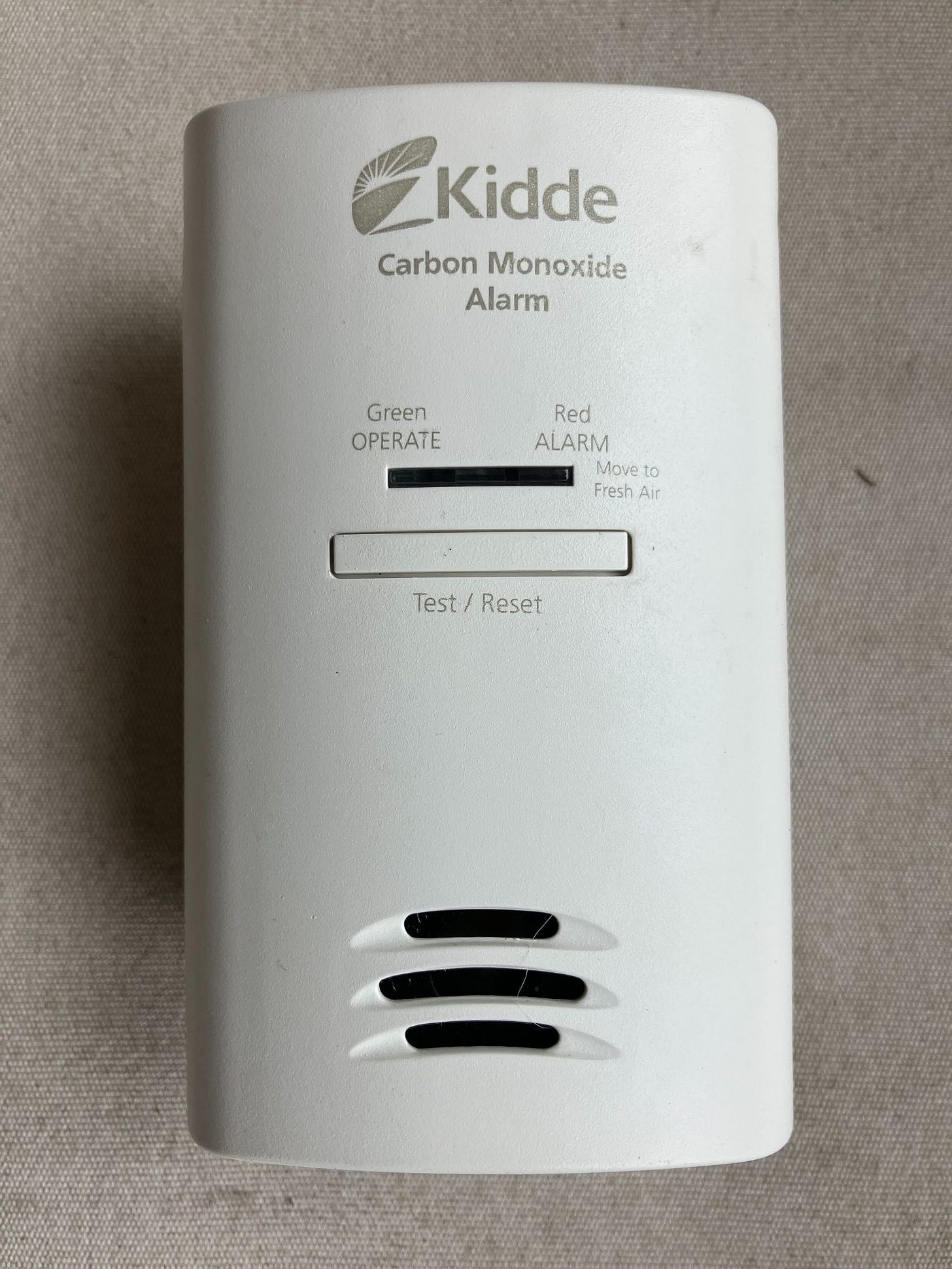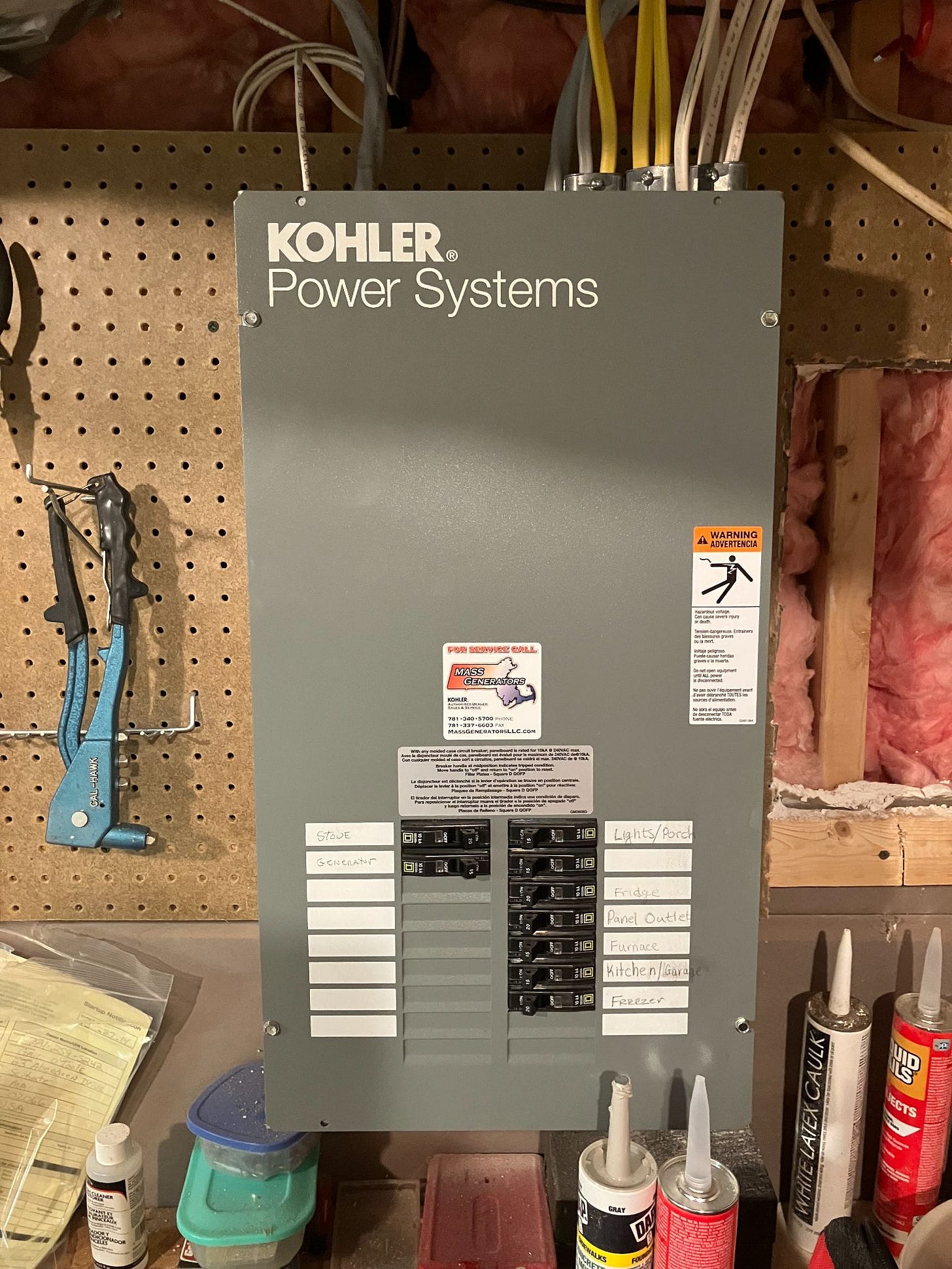AN ALARMING MORNING IN JULY
I returned home from Cape Cod early last week, unloaded the truck, and settled in for a peaceful morning reading the newspaper. I put some water on to boil and prepared to make a bowl of oatmeal with blueberries and almonds. I opened the Boston Globe and began reading the latest reports on the upcoming baseball trade deadline and the possibility of the Red Sox including speedy outfielder Jarren Duran in a deal for pitching. The customary loud whistle notified me that the water had come to a boil. I turned the gas stove off, deciding to continue reading about the Red Sox before having breakfast. Then I heard what I thought might be the sound of a distant alarm. The noise was constant as opposed to the annoying chirp of a smoke alarm in need of a new battery. I quickly identified that the sound was coming from my basement workshop. The workshop has a pegboard attached to the wall, a busy corner crowded with hanging tools and various materials spread out over a workbench. A box of circuit breakers connected to the home’s generator is mounted on the wall above the bench. I rooted around expecting to find the source of the noise, possibly a faulty smoke alarm tucked away in the rafters. Grabbing a nearby chair and flashlight, I stuck my head up into the ceiling area disturbing several unsuspecting spiders, but found nothing in the process.
A beeping alarm is a common occurrence for homeowners, a necessary annoyance that can either signify dangerous carbon monoxide or the presence of smoke. When in need of maintenance, these alarms send out loud beeps every minute or two usually meaning the batteries are in need of replacement. While the beeping itself can be enough to drive anyone insane, the intermittent nature of the alarm sometimes makes finding the source of the noise a clever game. Searching for a beeping alarm can lead you to focus on a specific area of the house only to discover that the noise is coming from somewhere else entirely, forcing you to patiently wait for the next chirp as a continuing series of auidible clues.
But the alarm in my house was not making an intermittent beep. The noise was constant and concerning, possibly trying to alert me that something was actually wrong. I opened the bulkhead doors allowing air to circulate through the basement wondering if my decision to heat up water had somehow activated the alarm. The internet recommended calling 9-1-1 immediately and getting out of the house. After checking the basement one more time for the source of the alarm, I placed a call to the fire department increasingly concerned about the potential of a dangerous gas leak. A woman on the recorded line told me that calling the fire department was the right thing to do, and certainly not an overreaction on my part. I was told that the fire department deals with matters like this all the time. The woman on the line asked me if I could smell anything out of the ordinary. I told her that, aside from the dirty laundry I had just brought back from the Cape, I could not. She had me confirm that I was not feeling dizzy or nauseous, and then told me to get out of the house along with any other people or pets that were home at the time. I waited at the end of my driveway with my dog for only a few minutes before the fire department arrived. Two firemen jumped out of an enormous truck informing me that they would do their best to identify the source of the alarm and also check for dangerous leaks.
One of the firemen began to explore the house with a handheld gas detector, raising the possibility that the noise might be caused by a septic alarm, a costly alternative that I was hoping to avoid. The firemen began to inspect the basement, agreeing that the noise appeared to be coming from somewhere behind the pegboard, possibly inside the wall just behind the generator’s electrical panel of circuit breakers. They mentioned that a detector might have been installed internally years before when the basement was being finished. The firemen said that finding the source of the noise might require the removal of drywall, a demolition job that was certainly not on my list for the summer. The two firemen also recommended reaching out to the company that had originally installed the generator and its accompanying box of circuit breakers, explaining that dismantling and reinstalling the system’s electrical hardware would require the attention of a qualified professional.
Just as I had done earlier, one of the firefighters then got up on a chair and began to explore the ceiling area. He began dislodging various wires and swaths of insulation that had been carefully positioned to cover ducts running the length of the room. He peeled back insulation, tore away old tape, and unfastened bungee cords and segments of rope, tossing everything down to the floor. Suddenly the alarm stopped. The three of us looked at each other to see which one of us might have touched something that could have affected the alarm. With the warning sound of the alarm no longer a point of concern and no identifiable gas leak anywhere in the house, the firemen wished me luck and headed back to their truck. They told me they would be at the station if the alarm went off again, diplomatically explaining that it was now my job as the homeowner to begin digging into the walls in order to locate the detector now making the harmless beep of a device that might just need a new battery.
With my workshop now in a state of complete disarray, I began to move tools and relocate portions of pegboard. A large section of insulation precariously perched above the workshop crashed onto my head along with the dust, dirt, and debris that had been gathering overhead for decades. Occasionally holding my ear close to the circuit panel, I listened for periodic beeps attempting to zero in on the approximate location of the mysterious detector and began to cut the pegboard in measured squares with a jigsaw. Deciding that the jigsaw was too much of a risk with multiple wires coming from the area of the electrical box, I turned to an old oscillating multi-tool instead, a useful device that would help to remove the pegboard and easily cut through small portions of drywall. Systematically stripping back a corner of the basement, I was eventually able to reach my hands into the interior of the walls. Peeling back insulation, I inspected every corner and crevice of the inner wall continuing to listen carefully for the beeping alarm, a device that now appeared to be taunting me in a costly and frustrating game of hide and seek.
A helpful neighbor arrived at the top of the bulkhead stairs to see if everything was alright after noticing the fire truck parked in front of the house. I told him about the strange alarm and how I was unable to find it. Listening for the occasional chirp of the alarm, my neighbor was convinced that the sound was coming from behind the box of circuit breakers, even raising the possibility that it might be coming from inside the box itself. He suggested removing the front panel of the box in order to find the origin of what he thought was a suspicious wire. Although I was first hesitant to dismantle the box believing the installation company might refuse to provide annual service if the generator was tampered with with by an outsider, I quickly warmed up to the idea recalling that their expensive maintenance visits usually amounted to spraying the unit with a can of WD-40. We removed the front panel of the control box and found nothing out of the ordinary. In order to access some of the lower screws on the box when attempting to reattach the front panel, we were forced to move a small tool bag sitting just below the unit on the workbench, a red canvas bag that came with a new Milwaukee drill I had purchased a few years back. We were then both startled by a loud beep that appeared to have come from a small gadget sitting on the bench just below the cirucit breakers, an area that had been hidden by the tool bag. The object that had beeped was an old carbon monoxide detector with its original batteries. Just as Tim Allen and Richard Karn might have done years ago on the television show, Home Improvement, my neighbor and I looked at each other in disbelief not yet able to rationalize how four grown men including two firefighters were able to miss a carbon monoxide detector on a workbench behind a small tool bag. To be sure this was not just a coincidence, we placed the carbon monoxide alarm at the top of the bulkhead stairs and waited for several minutes until it beeped again. In what might have been a moment of optimistic denial, my neighbor said that detectors like this didn’t have the ability to make a continuous alarm sound like the one that I had heard initially, but a quick search on the internet told me otherwise, that such a unit will make a steady sound indicating either a malfunction or signaling end of life, in this case hopefully not for the homeowner.
Having partially destroyed my basement by lunchtime, I could now say with virtual certainty that I had located the alarm in question and could now continue with what began as a peaceful morning, reminded that being a homeowner sometimes means the willingness to accept that you have more in common with Larry, Darryl, and Darryl than the guys on This Old House.
If you like my articles, please hit the “LIKE” button. It will help to let me know that you are enjoying my writing.
I welcome and invite you to COMMENT.
And please SHARE these posts! This gives added support to my Substack page and also helps to add new readers.
Thanks so much to anyone who is reading Journeys with Jay!








